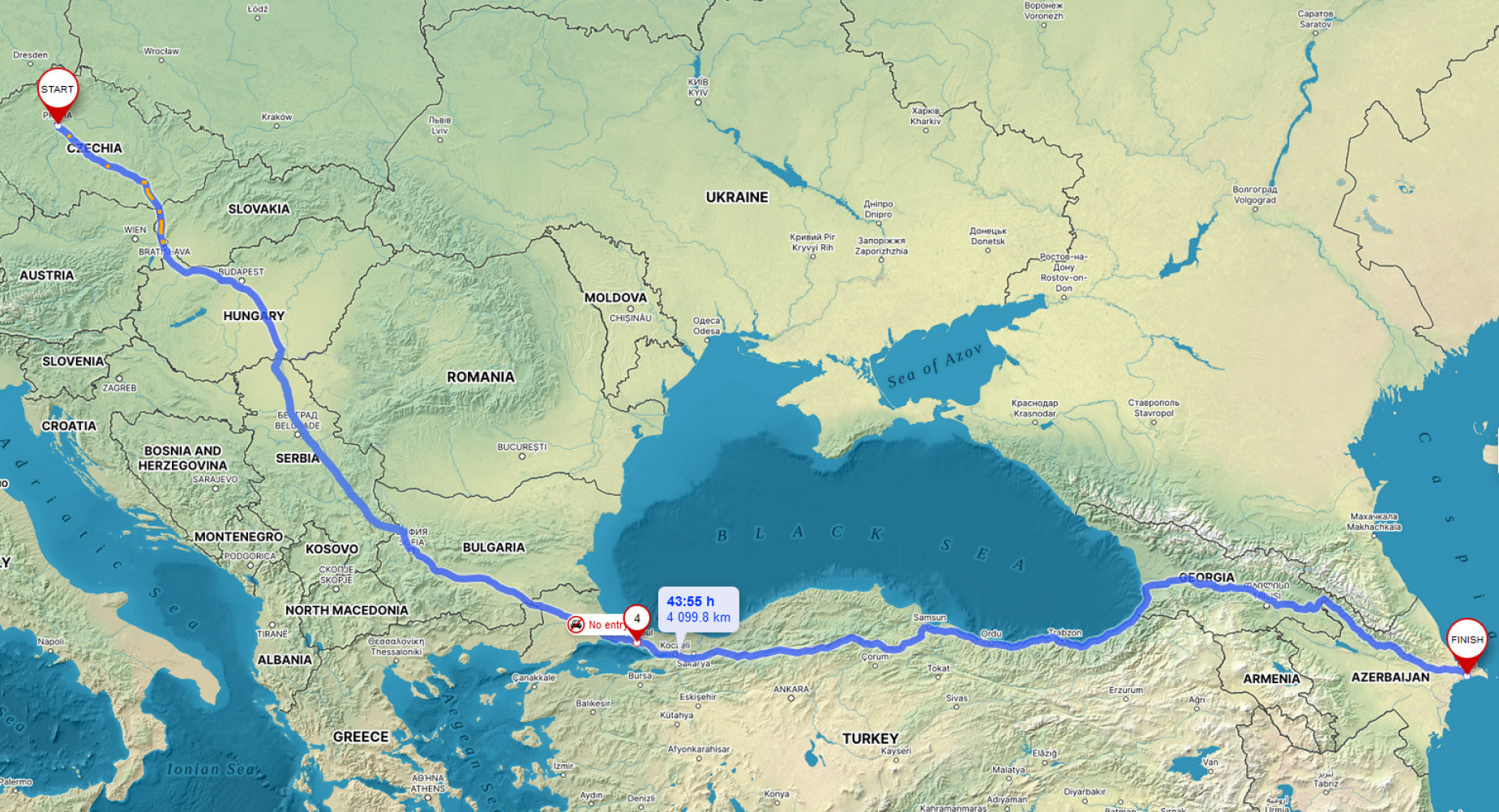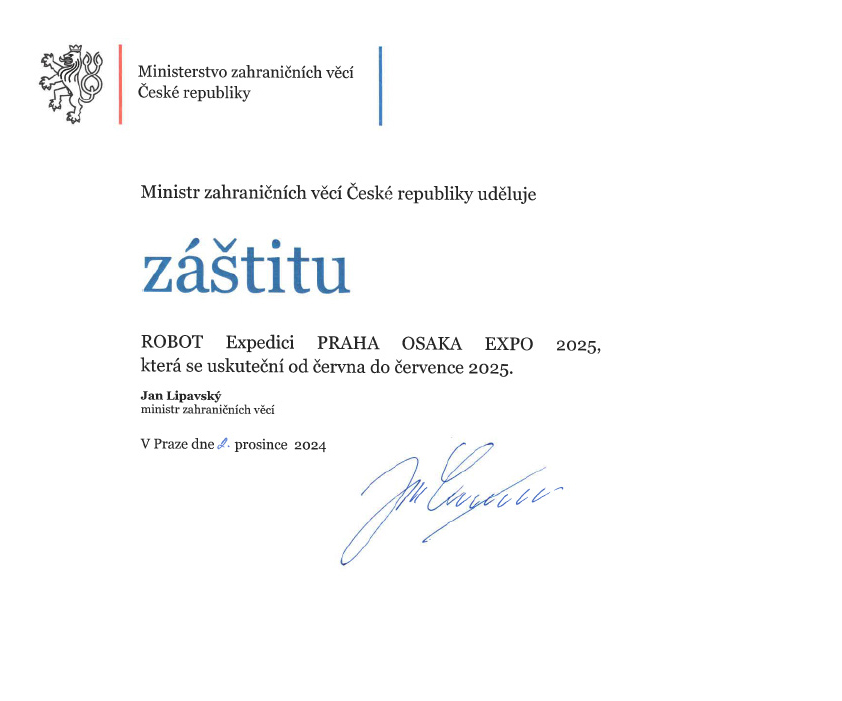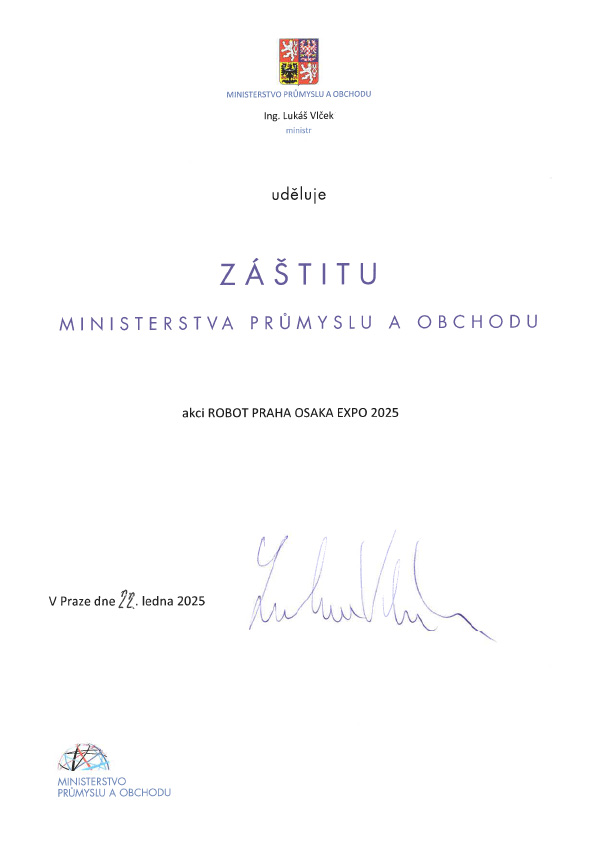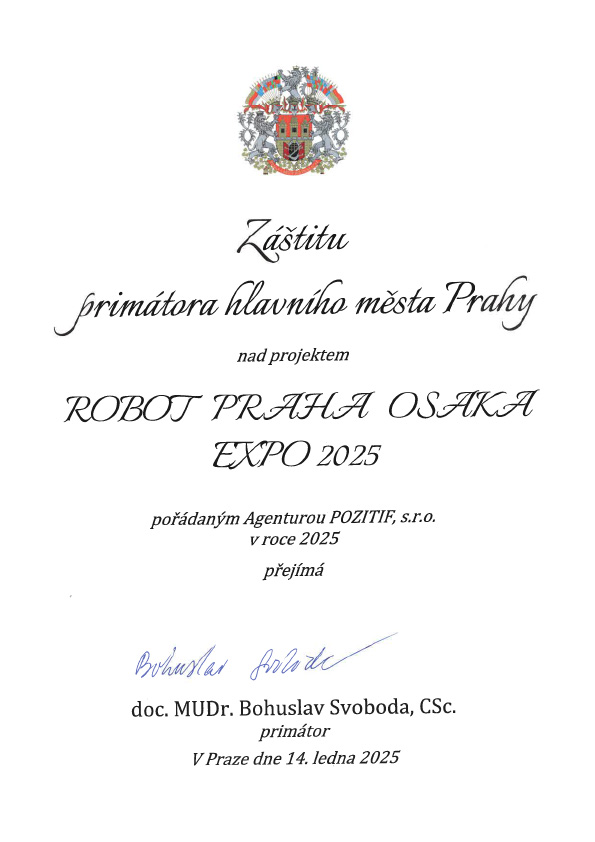ROBOT
EXPEDITION
PRAHA–ÓSAKA (大阪市)
EXPO 2025
MISSION OF FRIENDSHIP AND PEACE BETWEEN NATIONS

With reference to the Sakura expedition from 1970, when Czechoslovak tourists went on foot and by hitchhiking to the first Expo in Osaka, we want to follow up on this event and make the historical Czechoslovak Tatra and Škoda cars famous in the world.
We accept the challenge and want to conquer the difficult route and meet the adventure that awaits us along the way. Our expedition from Prague to Osaka is more than just a journey for new experiences; it is a symbol of friendship and mutual understanding between nations.
Traveling in vintage cars brings us nostalgia and the joy of driving, but it also connects us with people and places that are often forgotten in the fast pace of modern life. Every stop and encounter with locals, every exchange of views and experiences, all this creates bridges between cultures and new friendships.
The journey can be just as important as the destination.
Let‘s write this story together.
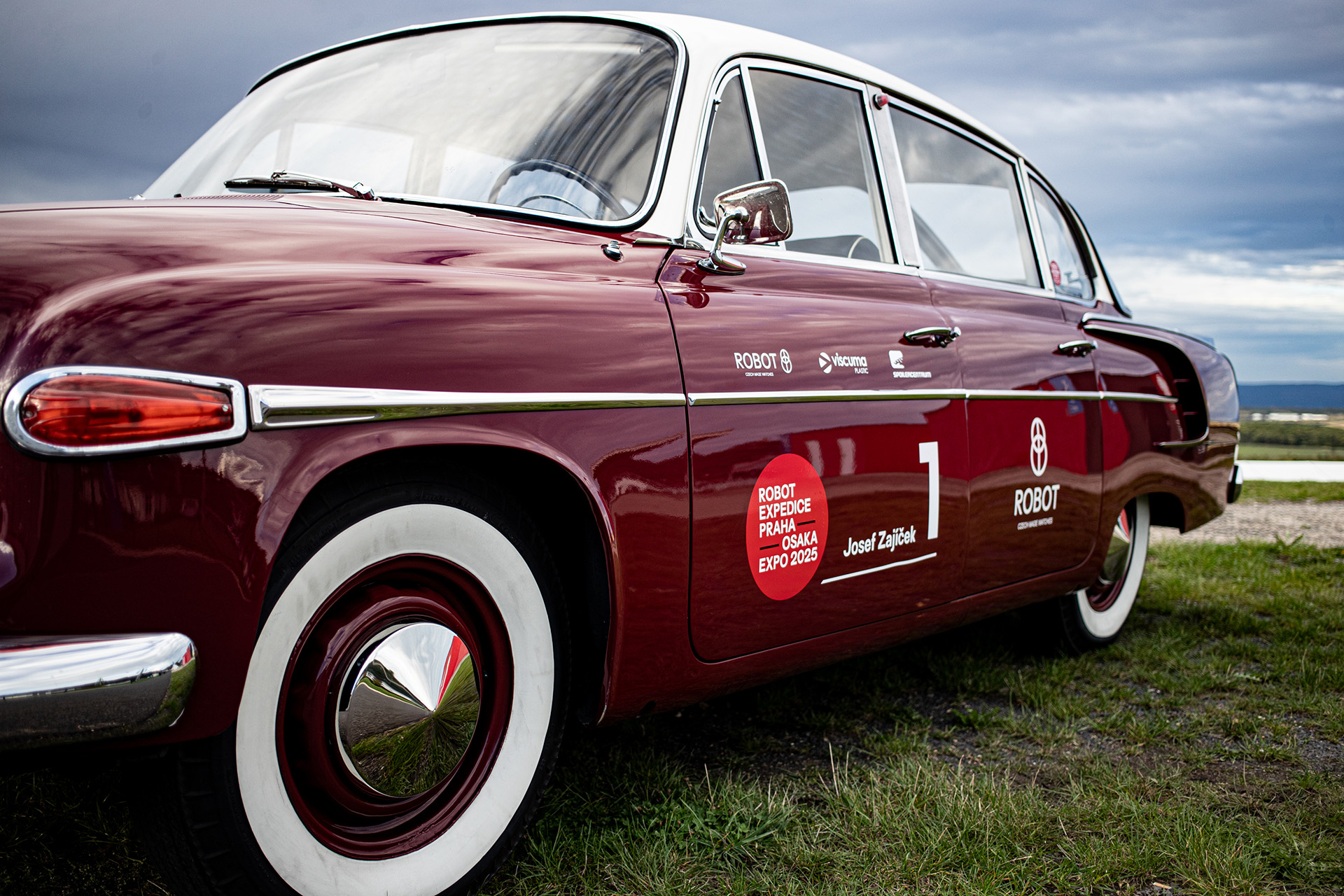
ROUTE
Countries and important cities on the way
Czechia
Slovakia
Hungary
Serbia
Bulgaria
Turkey
Georgia
Azerbaijan
Caspian Sea – by ferry
Kazakhstan
Uzbekistan
Kazakhstan
China
Yellow Sea – by ferry
South Korea
East Sea – by ferry
Japan
Participants
1
Josef Zajíček
Founder of the expedition, entrepreneur, and classic car enthusiast. Owner of the Autodrom Most racetrack and the Robot watchmaking manufactory. With extensive experience in the automotive industry, his passion for vintage cars led him to organize this exceptional expedition.
Robin Běhal
MPresenter and editor of the TV Prima show Autosalon, traveler, and automotive influencer. During the expedition, he is responsible for creating photo and video content for fans, media, and the project itself. With his media expertise and passion for cars, he will provide unique materials and perspectives on the journey.
2
Luboš Pešák
Entrepreneur, owner of TS Bohemia, and operator of the Veteran Arena in Olomouc – one of the most significant classic car museums in the Czech Republic. A dedicated classic car enthusiast who contributes to preserving automotive heritage through his collection.
Ivan Uher
A Slovak entrepreneur and owner of Albatros SA, a company specializing in logistics of shipping containers and transportation within the European Union. With extensive experience in international transport and logistics, he combines his passion for classic cars with his expertise in long-distance travel planning and organization.
3
Ivo Tůma
Entrepreneur and owner of Badger, a company specializing in air conditioning and climate solutions for both small and large businesses. His vintage cars have unique stories, and he actively participates in their restoration.
Radek Toman
Support mechanic for the BADGERS team and co-driver of Ivo Tůma.
4
Alois Krejčí ml.
Entrepreneur and owner of ITAREG, a company specializing in robotics, automation, and information technology. A passionate vintage car and automotive industry enthusiast who shares a family tradition in classic vehicles and contributes to organizing the expedition.
Alois Krejčí
Founder and former owner of HYDROPOL Project & Management. His lifelong career has been in hydropower plants, while his lifelong hobby is classic automobiles. A devoted Škoda enthusiast and Vice President of the Association of Historic Vehicle Clubs. His dream of traveling around the world in a vintage car has been with him for many years. He is not only a team member but also the life-long co-driver of his son in the ITAREG crew.
5
Jan Drbohlav
IT and Product Sales specialist with 20 years of experience in senior management roles in telecommunications and automotive industries across Germany, Russia, India, and China. His practical experience in these countries, along with his lifelong love for travel and classic cars, led him to join this expedition and contribute to its success.
Václav Dědek
Manager with extensive experience in automotive manufacturing, having held senior management positions. A passionate motorsport enthusiast who participates in organizing and overcoming challenges on the route as a member of the GENX130 crew.
6
Miroslav Kuchár
Entrepreneur from Slovakia, owner of IK Stell. A lover of vintage cars and traveling – no matter the circumstances.
Mikuláš Koščo
Entrepreneur from Slovakia and devoted car enthusiast. Brings his business experience and passion for vintage cars to the expedition as a member of the Východňare crew.
7
Dalibor Šebek
Classic car enthusiast and real estate developer from Hradec Králové. His lifestyle reflects a passion for adrenaline, exploration, and meeting fascinating people. He brings enthusiasm for adventure, experiences, and inspiration to the expedition, as every new place holds a story.
Martin Novotný
A mechanic through and through, dedicated to his craft since graduating in mechanical engineering. He probably only has clean hands at Christmas and enjoys taking on challenges that others abandon. If he’s not in the workshop, he’s behind the wheel – even on the other side of the world.
Service Crew
Valdemar Vašenda & Martin Haša
Every great expedition needs reliable support and experts who can keep classic cars in top condition even in the most challenging environments. The expedition’s service team consists of two experienced mechanics ready to step in and assist the crews on their journey. Valdemar Vašenda – A mechanic with a lifelong career in servicing not only modern but especially classic vehicles. Martin Haša – A member of the service team and an avid traveler.
Cars
Tatra 603 (1959)

Type: Luxury Limousine | Engine: Air-cooled V8, 2.5 L
Origin: Czechoslovakia
Highlights:
Reserved exclusively for high-ranking state officials and diplomats.
Not sold to the public – cars were state-allocated.
Featured a distinctive front with three (later four) headlights and an aerodynamic shape.
Vehicles were often „recycled“ – the body remained while newer technology was installed.
Cultural Significance: A symbol of political power and exceptional Czechoslovak engineering. Exported even to Cuba and East Germany.
Curiosity: Fidel Castro reportedly used a Tatra 603 as a gesture of socialist solidarity.
Toyota Celica ST (1977)
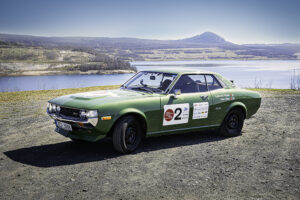
Type: Sports Coupé | Engine: 1.6 L I4
Origin: Japan
Highlights:
Designed for young American buyers – nicknamed the „Japanese Mustang“.
Light, reliable, and sporty – became a favorite among amateur racers.
Competed with European cars like the Opel Manta and Ford Capri.
Cultural Significance: A milestone in Japan’s expansion into Western markets during the 1970s.
Fun Fact: The name „Celica“ comes from the Spanish word celestial, meaning heavenly.
Škoda Octavia (1961 & 1962)

Type: Family Sedan | Engine: 1.1 L I4
Origin: Czechoslovakia
Highlights:
„Octavia“ was the 8th evolution of the Škoda 440 line – hence the name.
Appreciated for its simplicity and quality construction.
Easy access to spare parts made it a popular and reliable family car.
Cultural Significance: A staple of early ’60s Czechoslovak motoring.
Curiosity: The Combi version remained in service with institutions (including the police) well into the 1980s.
Škoda 100 L (1973)
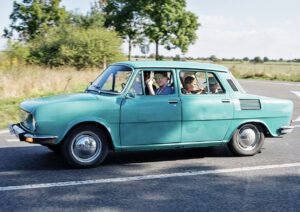
Type: 722 | Color: 5187 – Turquoise
Country of Origin: Czechoslovakia
Total production (1969–1977): 1,079,708 units across all versions
🛠 Current Status:
This particular car is currently undergoing a full restoration, inspired by the legendary rally version TYP 728 – Škoda 120S, homologated under Group A2 regulations.
🔧 Key modifications based on the 120S rally version:
Front-mounted radiator (instead of rear)
Enhanced 1.1 L rear-mounted engine
Motorsport-oriented adaptations aligned with the original export and racing version
📜 Homologation trivia:
Although 1,000 units were officially required for racing homologation, only 100 cars were actually built. Škoda successfully convinced the commission that the remaining 900 were “in service with Czechoslovak state security forces” – and the homologation was granted.
🏁 Racing debut: 1973 Swedish Rally – Norwegian driver John Haugland finished in 8th place overall.
History & Significance of the Škoda 100:
In the 1970s, the Škoda 100 became a symbol of the affordable family car in socialist Czechoslovakia.
Despite a few technical flaws – such as engine overheating and corrosion issues – it gained massive popularity due to:
Its simple, robust construction
DIY-friendly maintenance
Excellent availability of spare parts
🛠️ It became a cult car among home mechanics and remains one to this day.
🎩 Unique Story of This Car:
This turquoise Škoda 100 has had only two owners to date.
The first owner was, rather unusually for that era, a private tailor from South Moravia, who used the car to regularly visit clients in nearby towns and villages.
Unlike most vehicles at the time (which were state-owned), this car served a small tradesman throughout his working life.
Škoda 120 (1980)
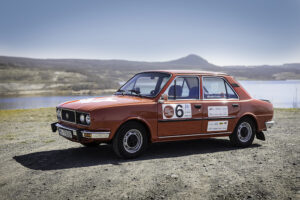
Type: Sedan | Engine: 1.2 L I4
Origin: Czechoslovakia
Highlights:
The final generation of rear-engined Škoda models.
Represented a transition between classic socialist cars and more modern designs.
Mistaken by some for the older Škoda 100, despite a new platform.
Cultural Significance: A practical workhorse that served families through the ’80s and early ’90s.
Curiosity: Though jokingly labeled „unreliable“, it was praised for its easy repairs and DIY-friendly mechanics.
Ford Mustang Hardtop (1966)
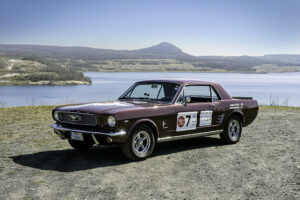
Type: Sports Coupé | Engine: 4.7 L V8 (various options)
Origin: USA
Highlights:
An icon of 1960s American car culture.
Helped launch the „pony car“ category – sporty, affordable, compact.
The hardtop version offered a more affordable alternative to the convertible, with similar styling.
Cultural Significance: Embodied freedom, youth, and the American dream.
Pop Culture: Famously driven by Steve McQueen in Bullitt – that car later sold for over $3.7 million.
Curiosity: Inspired by European sports cars but built for mass appeal – developed in just 18 months.
Signed Memorandum
On 06/09/2024, a Memorandum of Cooperation was signed between the Czech Center, the Office of the General Commissioner of the Czech Republic‘s participation in the VSV EXPO OSAKA 2025, represented by Mr. Ondřej Soška and Agency POZITIF s.r.o., organizing the ROBOT expedition Prague–Osaka 2025.
Patronage
Patronage of the Minister of Foreign Affairs of the Czech Republic
Patronage of the Ministry of Industry and Trade
Patronage of the capital city of Prague
WHY ROBOT EXPEDITION?
ROBOT is a Czech brand of hand-made watches that brings to life the famous stories of Czechoslovak industry in the 20th century. The Minor racing car, an icon of motorsport, inspired the brand‘s eponymous watch model. The first aerodynamic mass-produced passenger car in the world – the Tatra 77, influenced the design and name of the Aerodynamic model.
The highly successful training jet Albatros, developed in the second oldest aviation factory Aero Vodochody, then gave the name to the first pilot‘s watch ROBOT.
The word „robot“ originates from the Czech Republic, first introduced by the writer Karel Čapek in his 1920 play R.U.R., where it referred to artificial beings created to perform human labor. This term, now a global symbol of technological innovation, served as the inspiration for our brand name.
VEHICLES AND CREWS
The cars that will start the expedition will be at least 45 years old, i.e. manufactured before 1980. With reference to the tradition and cooperation of both nations, we prefer Czech (Czechoslovakian) and Japanese-made cars, but cars of other brands will also be able to participate.
START LIST
- starting number 1 – Zajíček Josef, Běhal Robin ROBOT Tatra 603, 1959
- starting number 2 – Pešák Lubomír, Uher Ivan, VETERÁN ARENA, Toyota Celica ST, 1977
- starting number 3 – Tůma Ivo, Toman Radek, BADGER, Škoda Octavia, 1961
- starting number 4 – Krejčí jr. Alois, Krejčí Alois, ITAREG, Škoda Octavia, 1962
- starting number 5 – Drbohlav Jan, Dědek Václav, GENX130, Škoda 100, 1973
- starting number 6 – Kuchár Miroslav, Koščo Mikuláš, VYCHODŇARE, Škoda 120, 1980
- starting number 7 – Dalibor Šebek, Martin Novotný, BIG FISH, Ford Mustang Hard top, 1966
The cars will be accompanied by a service car under the guidance of experienced mechanic Valdemar Vašenda.
Shipping schedule:
The expedition starts on June 21 at 10:00 a.m. from the Prague Castle courtyard
- 11/2024 First press conference – presentation of the idea, teams, route
- 02/2025 second press conference – presentation of the route details,
partners, concepts, media partners - 20/06/2025 third press conference before the ceremonial start
- 21/06/2025 start of the expedition
- 07/2025 arrival at the Expo in Osaka
- 07/2025 return of crews to the Czech Republic (cars in containers,
crews by air) - 09/2025 discussions about the trip, exhibitions
16.000 km
on the road between two metropolises
with rich historical roots Prague – Osaka
1.000 km
daily
21 days
on the road

